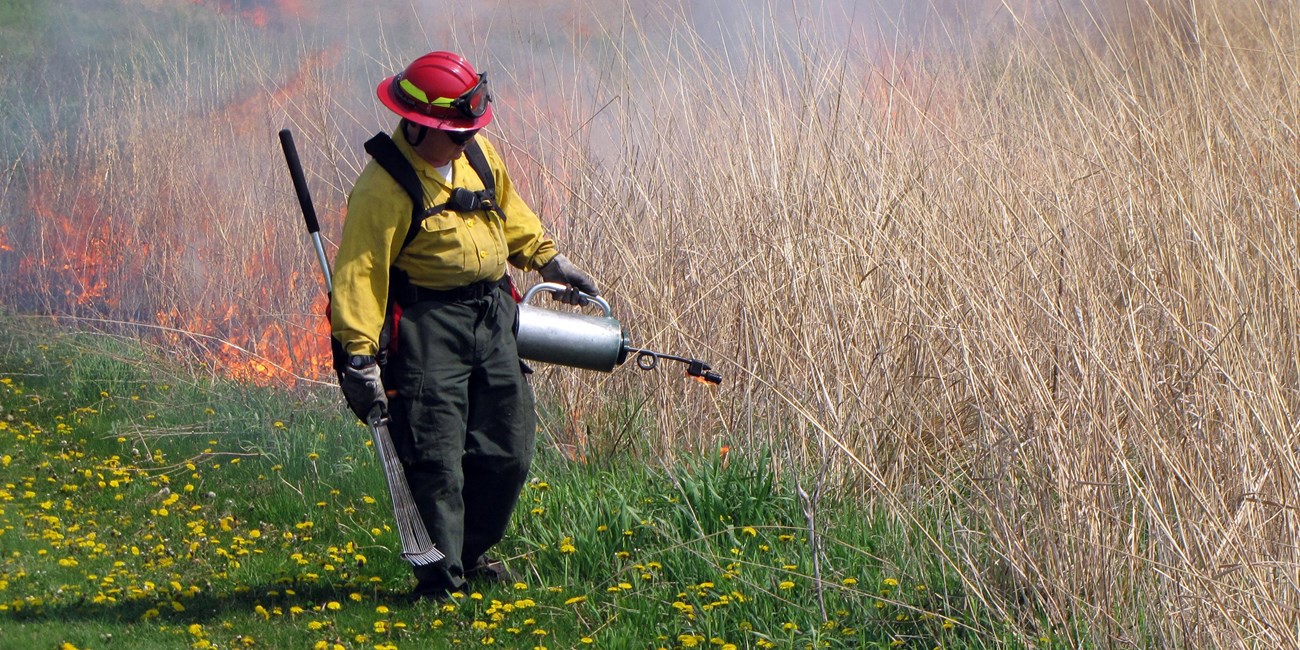Last updated: October 8, 2020
Article
Fire Ecology Monitoring at Herbert Hoover National Historic Site

NPS Photo
A Greater Understanding
Prairie ecologist, Dr. Paul Christiansen, began monitoring the Herbert Hoover NHS prairie in 1982, 11 years after it was planted, and continued annual monitoring through 2005. This wealth of data on prairie plant community condition provides insight to the effects of various management strategies. Resource managers selected native species diversity and relative cover of exotic species as Vital Sign indicators of plant community health. Current long-term monitoring will be appended to the 1982-2005 dataset to assist managers in adaptive management decisions to attain desired conditions in the prairie.
Data Analysis At Heart Of Monitoring
Heartland Network, Inventory and Monitoring Program, data analysts used the Christiansen data to compare prescribed fire treatment with changes in plant community richness and diversity, and to examine changes in exotic species cover. The analysis considered trends in native plant richness and exotic plant cover relative to time of last treatment with fire.
Prescribed Fire Affects Species Richness & Exotic Species Cover
Although the original planting contained only five grass species, incidental additions of forbs over the years resulted in a diverse community of over 200 species and a variety of species guilds. Species diversity lies below the management goal, but has been relatively stable. Additionally, scientists made several other observations:
- Exotic species pose one of the most important threats to the prairie plant community. Although exotic plant relative cover fell far below the assigned tolerance limit in 1992 at 2%, it increased to 20% by 2005, more than twice the tolerance level.
- In general, species richness declined as time since last prescribed fire increased.
- Varying the conditions of prescribed fires (e.g., season, fuel moisture, time since last burn) may support efforts to increase species diversity. Altering fire treatment seasons may give competitive advantage to certain species one year and to other species when fire timing differs. Forb species that are not currently well represented may have pportunities to germinate or flower when disturbance patterns are varied through time and space.
